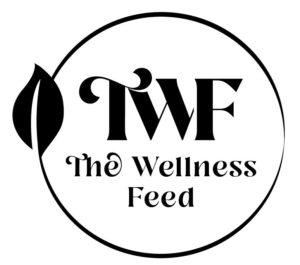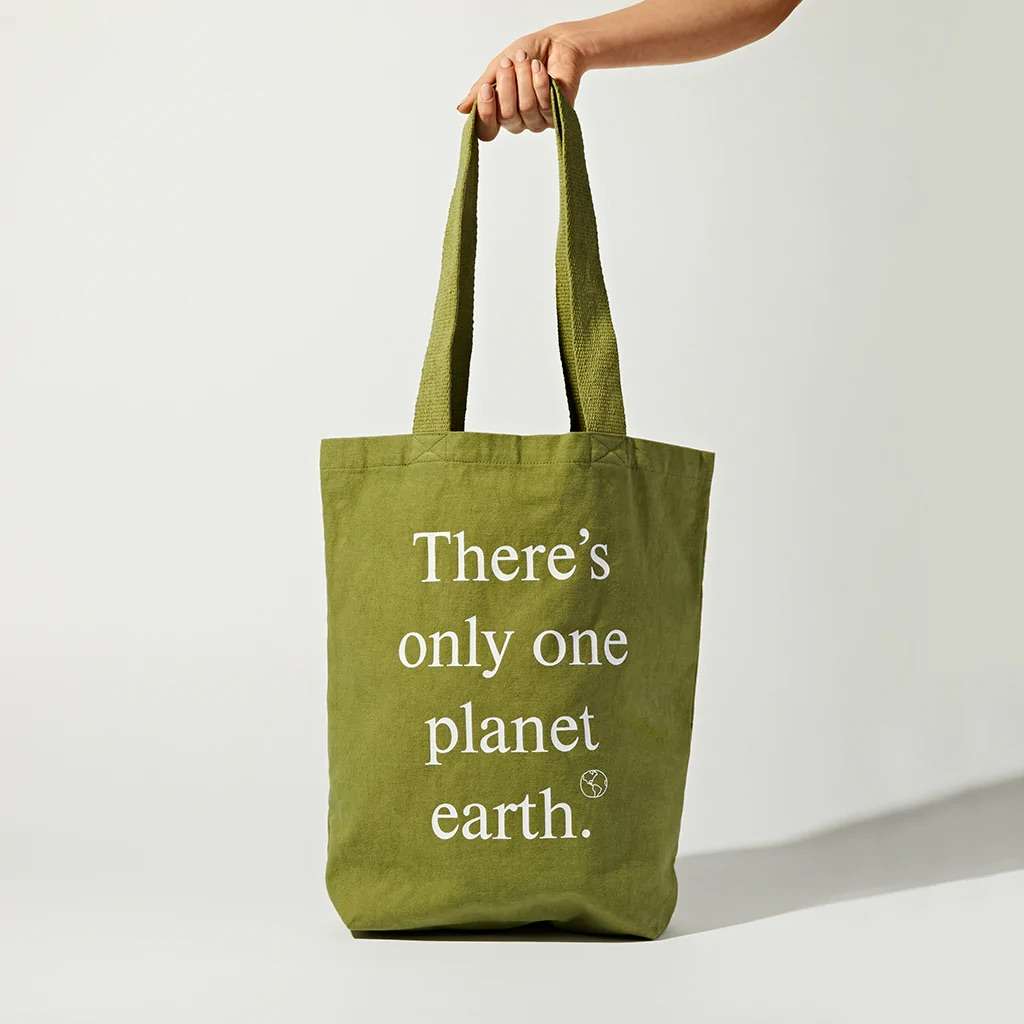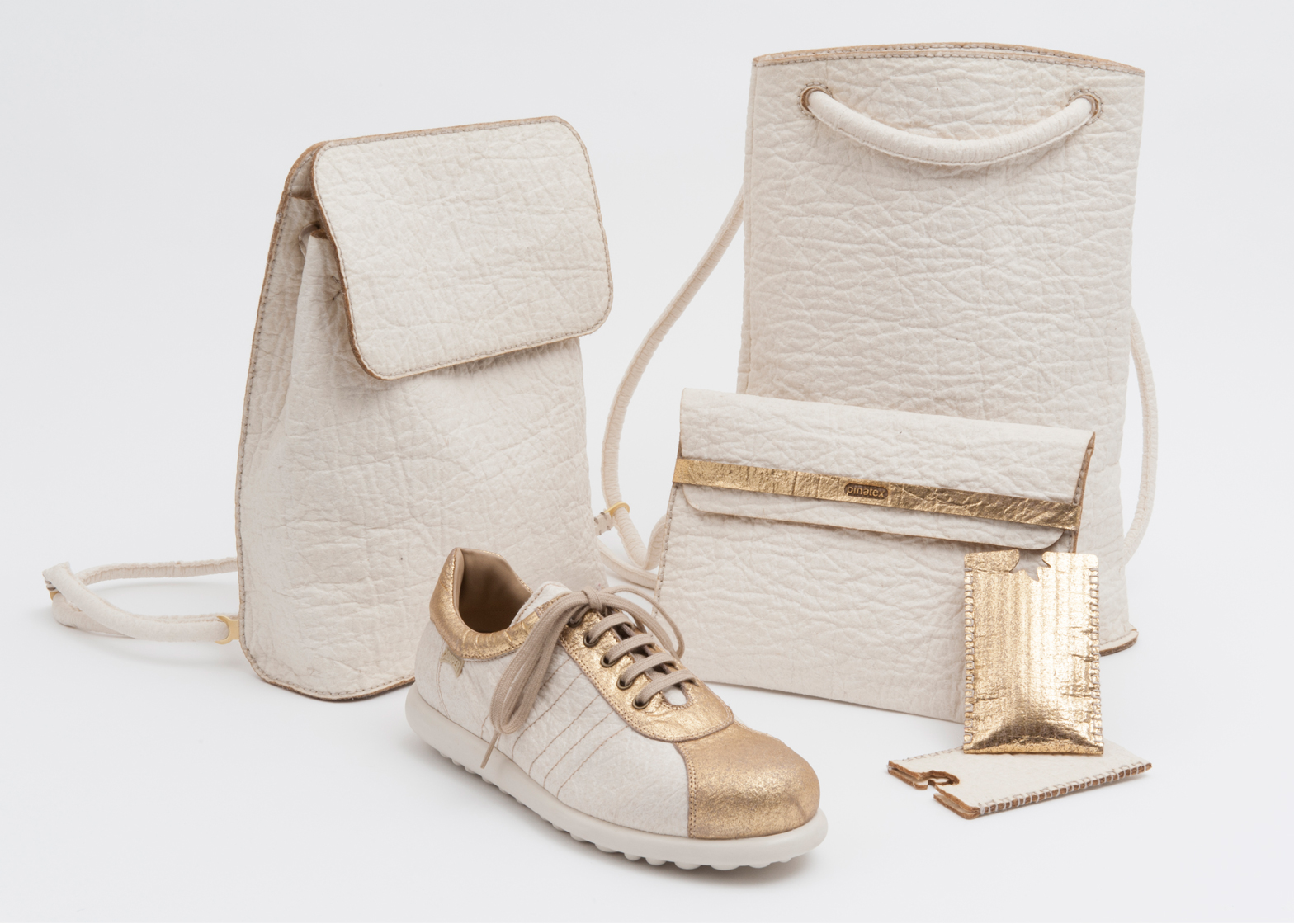PANGAIA’s seaweed t-shirts & recycled cotton track pants have been spotted on celebs. Now, read the story behind the eco-streetwear brand.
| All products featured on The Wellness Feed are independently selected by our editors for its environmental and ethical impact. However, when you buy something through our retail links, we may earn an affiliate commission. |
PANGAIA landed on the radar of the fashion set when celebrities began popping up in their sherbet-colored sweatshirts and cropped sets. Yet, proving that it was more than a streetwear label loved by Hollywood’s ‘it-crowd’, Pangaia firmly branded itself as a materials science company making waves with the launch of a t-shirt made from seaweed fibers and botanical dyes (with an equally sherbert-inspired color palette) in 2018 and a puffer jacket stuffed with wildflowers (as an alternative to down feathers or polyester fillings) in 2019. Each product launch was an innovative solution to some of fashion’s biggest environmental problems. And everything was packaged in compostable shipping materials.
Since then, The Wellness Feed has had the pleasure of interviewing the material science brand twice- for the launch of the debut of their t-shirts made from seaweed fibers and its collaboration with the #TogetherFund for a collection where 100% of the proceeds would go to the nonprofit to help racial inequality. The brand has since expanded its scope to include sneakers made from ‘grape leather’ and a host of other streetwear basics made from recycled, organic, or cellulose-based materials.
Here’s a look back at the making of a brand making the planet’s coolest sustainable streetwear.
Cotton T-Shirt With C-FIBER™ Core – Off-White
Made from 20% Lyocell SeaCell (seaweed fiber) and 80% cotton. $50

Pangaia’s is a material science label. What does that term mean?
To put it simply, PANGAIA is in a unique position where it can leverage the network and access built over the past 2-3 years by Future Tech Lab. PANGAIA as a materials science brand is bringing innovations to life through products of everyday use. We have our own lab in Florence, Italy where we develop our very own proprietary materials and technologies in-house, as well as build on science developed to date.
Why Was Seaweed Your Plant Of Choice Instead Of Other Materials?
The patented seaweed fibre gives the ultimate wearing comfort due to its soft feel and great moisture absorption. It also wears and washes well and is biodegradable and compostable. It’s inventors also believe that it has a positive effect on the body when worn next to the skin. Saltwater seaweed is rich in essential substances (like vitamins, antioxidants, trace elements, amino acids and minerals) which are known to have many positive effects. The inventors believe the natural moisture level of the body could enable an active exchange of these beneficial substances between fiber and skin, providing noticeable benefits.
What Sustainable Dyes & Dying Methods Do You Use?
Where we use color, we only use natural dyes, and these have been created from food waste and natural resources. Plants, fruits and vegetables help to achieve richly hued tones which work well together – from sakura blossom pink, to madder root red. Our supplier dyes textiles in a way that uses less water, is non-toxic and biodegradable. All our garment logos and prints are also created with water-based PVC-free ink. We always respect the Restrictive Substance List.
How does the dyeing process minimize waste?
The bright shade of JUST Blue was created using Environmentally Friendly Dyes and a recycled water system. The method uses a dyeing process with low water consumption and treatment of textile effluents, aiming to reuse water during the washing processes. This is a more sustainable and environmentally friendly process that reduces the toxic impact on the planet.
Why the focus on preserving water over other resources?
Water is the source of all life. Humans and planet Earth are both made up of around 70% water. It is our duty to protect and preserve it, in the same way that it sustains us and all living things on this planet.
What Does Sustainability Mean To The PANGAIA Team?
We need a lot of people doing some things better rather than a few people doing everything perfectly – change comes from the collective behavior of people and our joint commitment to evolving systems. Personally, we follow what we hope is becoming the standard wisdom- things like use less plastic, don’t buy synthetics, eat vegan as much as possible, engage in systems of the shared economy which promote sustainable behavior.
While we should all act and buy in moderation, we still need to be able to celebrate beauty, personal expression, and everything that makes fashion a wonderful art form, we should be concentrating on making appropriate material solutions that still allow us to create. What frustrates me most as a scientist is knowing that technical solutions exist but systems governed by policy, economics, and a general lack of education and understanding are keeping us from living in a world of abundance.
How Does PANGAIA Maintain A Zero-Waste Production Process?
From a scientific point of view, decarbonization and the eradication of fossil fuels lie at the heart of what we are doing as a brand. This informs our priorities and guides our product decisions around creating a sustainable supply chain- which can range from avoiding the inclusion of anything that contributes to microplastics or seeking production facilities powered by alternative energy sources.
We have just launched an ongoing partnership with an amazing San Francisco based organisation called SeaTrees. For each product sold, we plant 1 mangrove tree with SeaTrees on the customer’s behalf. One mangrove tree stores up to 1 ton of CO2. So, 1 product purchased = 1 mangrove tree planted = 1 ton CO2 stored. Which is equal to a flight from London to NYC, imagine that. Mangrove forests are 5x more effective at storing carbon compared to tropical forests. And we are taking our customers on this journey with us, giving them the opportunity to do something better for the environment. This year we are going to announce that we are a carbon neutral or even carbon negative business – and we are nearly there!
FLWRDWN™ Gilet – Plum Purple
Made from 100% recycled materials and a filling that is 80% polylactide and 20% cellulosic fiber. $295 ($222)
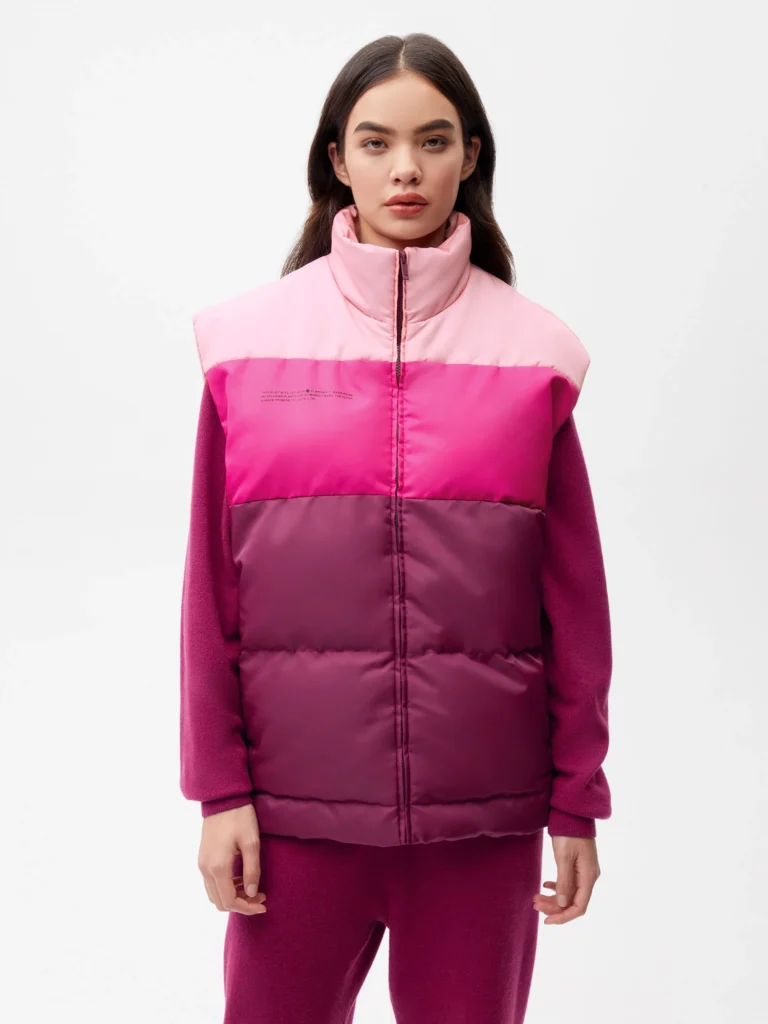
What Are PANGAIA’s Sustainable Goals?
We are focused on developing and introducing breakthrough textile innovations and patents into the world through everyday lifestyle products. What we launched with about a year ago is effectively an experiment with seaweed fiber which we turned into a fabric and into a t-shirt, which became our MVP – the Seaweed Fiber T-shirt treated with peppermint oil to keep it fresh longer. Then we added a collection of t-shirts and hoodies/track pants dyed with botanical colors, our FLWRDWN™️ puffer jackets etc. All our products are beautifully designed, with as many innovative, responsible, recycled and recyclable elements as possible, packaged in a compostable part bio-based alternative to plastic.
We have some big partnerships in the works for this year that we are extremely excited about, including some artist collaborations. Other future plans include category expansion into accessories, jewelry, beauty, furniture, and space!
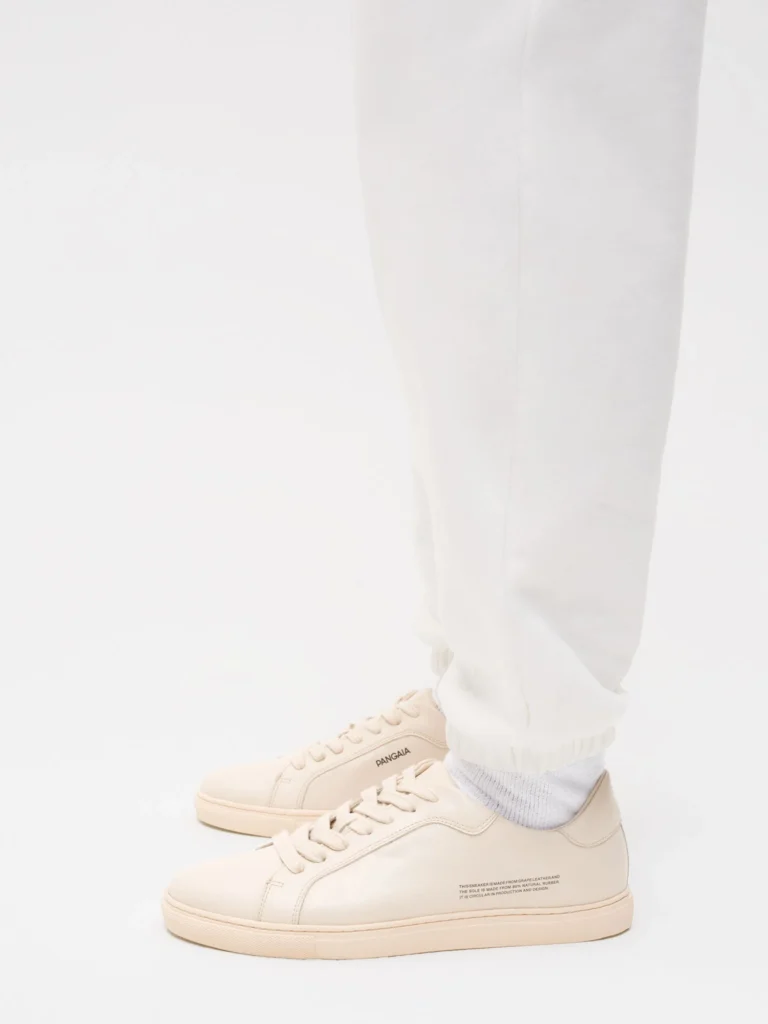
Grape Sneakers – Sand
Made from 80% ‘Grape Leather’ with 80% cotton and 20% lyocell lining. $110 ($56)
What tips do you have about how we can all better protect the earth’s resources?
We need a lot of people doing some things better rather than a few people doing everything perfectly – change comes from the collective behavior of people and our joint commitment to evolving systems. Personally we follow what we hope is becoming the standard wisdom- things like use less plastic, don’t buy synthetics, eat vegan as much as possible, engage in systems of the shared economy which promote sustainable behavior.
In general, we don’t subscribe to the notion that sustainability needs to be defined by shutting down production and consumption. While we should all act and buy in moderation, we still need to be able to celebrate beauty, personal expression, and everything that makes fashion a wonderful art form, we should be concentrating on making appropriate material solutions that still allow us to create. What frustrates me most as a scientist is knowing that technical solutions exist but systems governed by policy, economics, and a general lack of education and understanding are keeping us from living in a world of abundance.


